A guide to Broome and the Kimberley
Welcome to Broome!
Red desert meets the aquamarine sea in Broome, a former pearling port with a rich cultural heritage that contributes to this frontier town’s unique character. Known as Rubibi to the Yawuru people, the region’s Traditional Owners, Broome is famous for being the home of Cable Beach, a magnificent sweep of blonde sand known as one of the most magical sunset spots in the country. But there’s plenty more to see and do in and around town.
Start with a primer on the region’s history at the Broome Museum and Pearl Luggers, a small museum dedicated to the area’s pearling past. Dive deeper into Broome’s backstory on tour with Yawuru man Bart Pigram from Narlijia Experiences Broome, or head out on your own to uncover some of Broome’s worst-kept secrets.
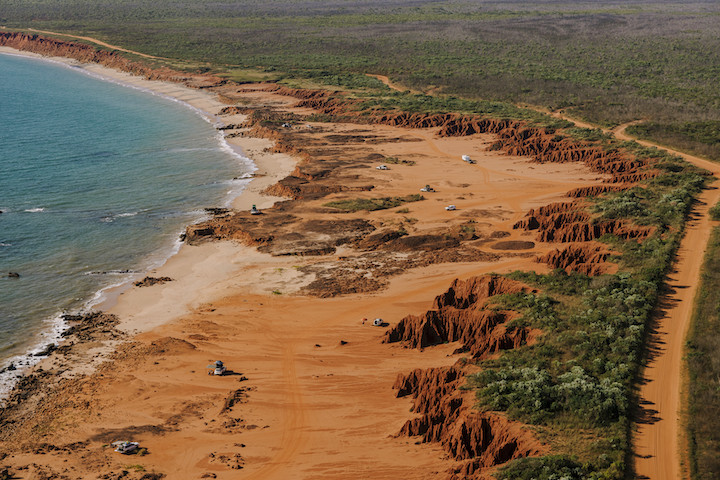 Image: Tourism Western Australia
Image: Tourism Western Australia
At the southern end of Cable Beach, the pindan (red soil) cliffs of Gantheaume Point aren’t just a beautiful sight. They also guard one of Australia’s most significant collections of dinosaur footprints, only visible at very low tide. Also accessible at low tide are several WWII flying boat wrecks resting in the mudflats of Roebuck Bay, just under a kilometre off Town Beach.
South of Gantheaume Point, Reddell Beach was born for the ‘gram, its scarlet cliffs contrasting beautifully against the light sand and turquoise water. A network of walking trails wind through the dunes behind Cable and Reddell beaches, while the Broome Food and Heritage Trail immerses you in the culinary heritage of the township. In town you’ll also find galleries, boutiques, and an array of places to eat and drink, including a local brewery and a distillery. Broome’s vibrant Courthouse Markets are held every weekend, and historic outdoor cinema Sun Pictures screens films every night.
Easy excursions from Broome
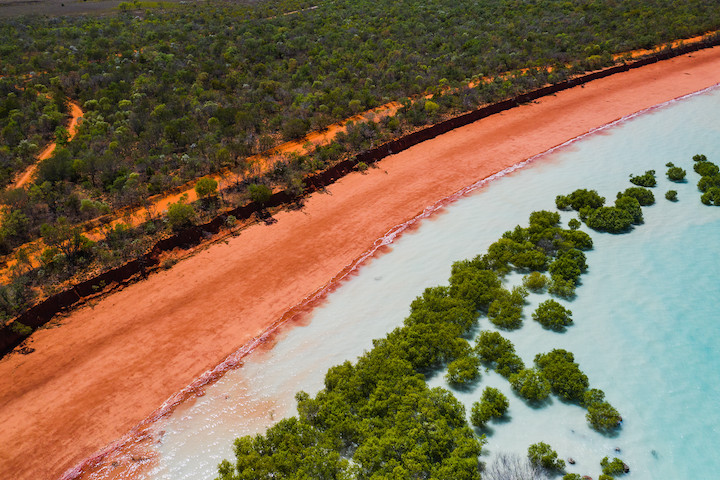 Image: Tourism Western Australia
Image: Tourism Western Australia
The township of Broome is cradled by Roebuck Bay, one of Australia’s most important sites for migratory shorebirds. Indulge your inner twitcher at the Broome Bird Observatory or ‘Bird Obbie’, a 40-minute drive east of town, which offers an interactive visitors centre, quiet walking trails, and a number of tours.
North of Broome lies a vast expanse of remote back country. Pack a picnic lunch and head out for a day exploring wild, deserted beaches and perhaps tour a working pearl farm or two. The Cape Leveque Road that takes you to the tip of the magnificent Dampier Peninsula is now sealed, but you’ll need a high-clearance 4WD to access many locations along the route which remain unsealed. If you're not confident off-roading on your own, book a day tour and enjoy the scenery with an experienced local at the wheel.
If you’ve got some (read: a lot) of pocket money to burn, you can also opt to take in some of the Kimberley’s top highlights on a flightseeing tour from Broome, with day tours including visits to the likes of Horizontal Falls, Mitchell Falls, and even Purnululu National Park, home to the iconic beehive-shaped domes of the Bungle Bungle Range.
Travelling deeper into the Kimberley
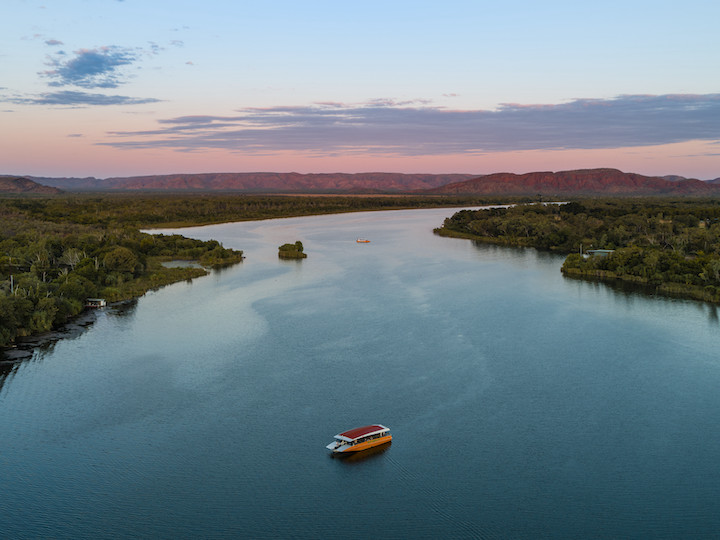 Image: Tourism Australia
Image: Tourism Australia
The classic way to see the Kimberley is on a 4WD adventure deep into one of the world’s oldest and largest wilderness areas. Leave the driving to an expert on an organised tour departing from Broome, or prep for an independent road trip of a lifetime in your own high-clearance 4WD or a rental.
Slicing through this otherworldly landscape is the 660km Gibb River Road connecting Derby (220km north-east of Broome) and Kununurra (the north-eastern gateway to the Kimberley), passing vast cattle stations, spellbinding national parks and dramatic gorges, with plenty of scenic places to camp along this mostly unsealed road.
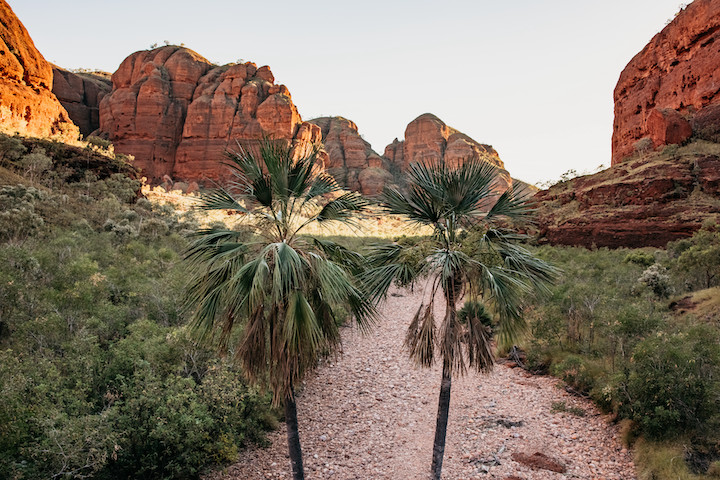 Image: Tourism Western Australia
Image: Tourism Western Australia
For a smoother ride, the 1,100km stretch of the Great Northern Highway that makes a lazy arc between Broome and Kununurra is a similarly spectacular drive, with highlights including Purnululu National Park, Wolfe Creek (yep, the one from that horror movie) and outback towns including Fitzroy Crossing, which makes a handy base for exploring the nearby Devonian National Parks of Tunnel Creek, Windjana Gorge and Geikie Gorge. The main road is sealed, but you’ll need a 4WD to access some attractions.
What to know before you go
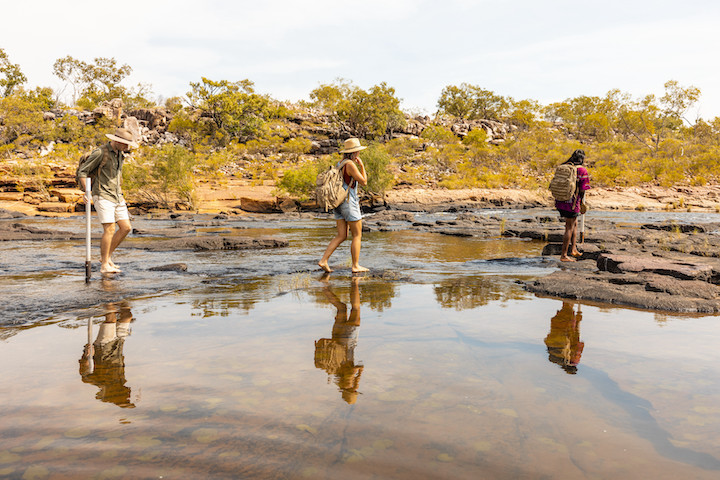 Image: Tourism Australia
Image: Tourism Australia
With many roads into Kimberley rendered inaccessible during the wet season (November to April), the dry season (May to October) is the most popular time to visit. No matter when you come, stopping by the Broome Visitor Centre when you arrive is always a good idea. Here knowledgeable staff can update you on current conditions in the Kimberley and help you to ensure that you’re adequately prepared for touring the region safely. In this wild and unpredictable corner of Australia, it’s information that could save your life.
Dry season also coincides with the best time to hit the beach, with the Shire of Broome urging beachgoers to avoid entering the water at anytime between November and April due to the presence of deadly Carukia barnesi jellyfish (commonly known as Irukandji), crocodiles and sharks. Swimming at patrolled beaches is also recommended; Cable Beach is patrolled daily from April to October.
Words: Sarah Reid
Read next: The perfect Perth to Broome road trip itinerary

